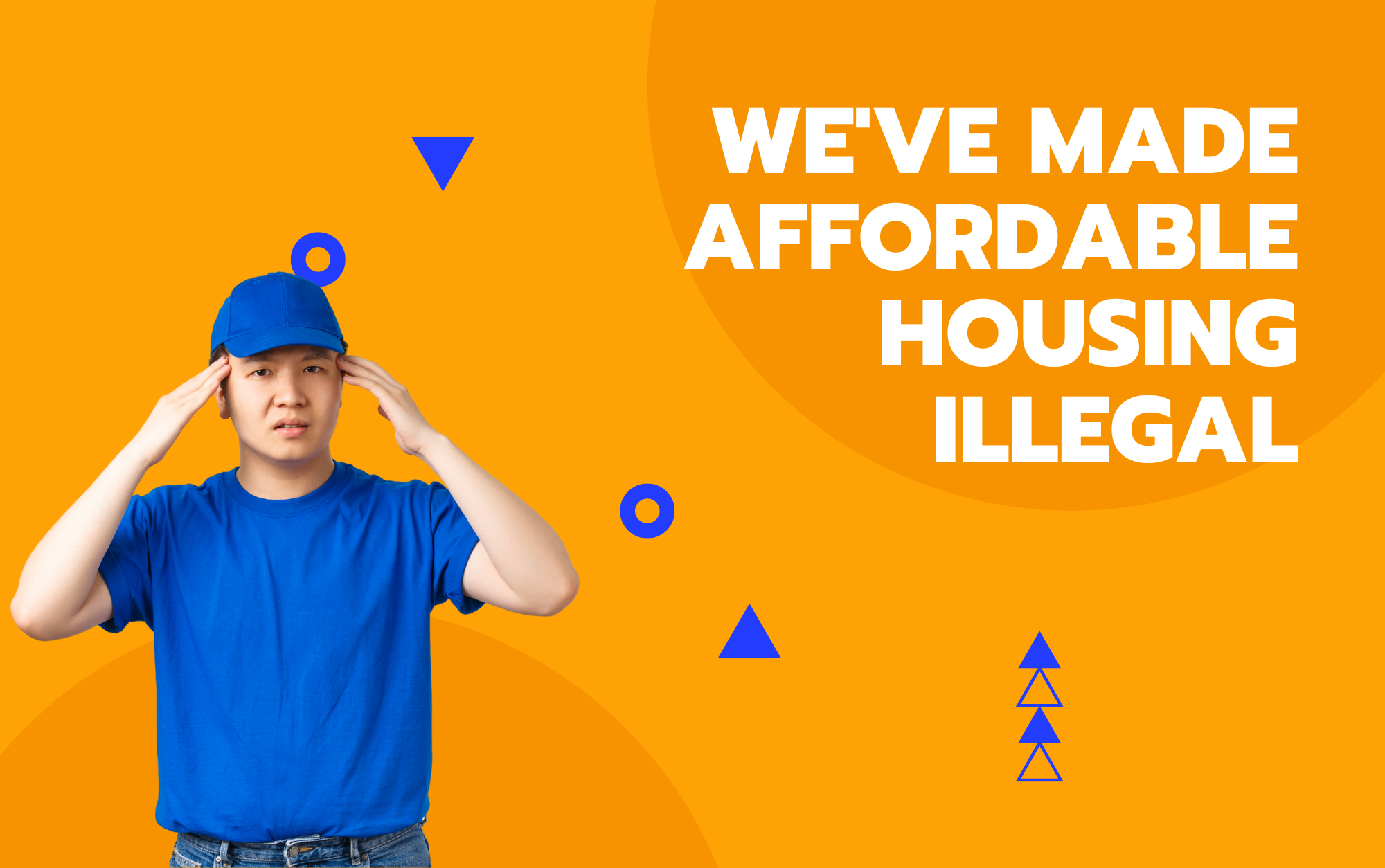Road to World Homeless Day 2022: Week 1
Caravan parks and tent cities are overflowing with people who have been left behind by a lack of affordable housing to rent or buy.
In the lead up to World Homeless Day on 10 October, we’re going to highlight issues that have led to our alarming housing shortage – and some steps we could take to help fix it.
The Problem: We’ve made affordable housing illegal
For decades, the ‘Great Australian Dream’ has been a large house on a quarter-acre block in suburbia. And there’s nothing wrong with that dream, just as there’s nothing wrong with dreaming of something different to suit your lifestyle or budget.
The problem in Brisbane and many Australian cities is we’ve made it illegal to build anything but the ‘Great Australian Dream’ home in most residential areas. Duplexes are out. Villas are out. Townhouses or row houses are out. Granny flats are OK, but make sure it’s a member of your own family living there; the moment you rent it out, it becomes two households on one lot which is illegal in much of suburbia.
These ‘missing middle’ housing options often used to service the lower end of the housing market and provide a path to home ownership. Mum and dad landlords could rent out their granny flat or live in one half of a duplex while letting the other. This creates rental stock while also providing pathways into home ownership or a bit more income to pay for the rising cost of living.
The Solution: Let’s make it legal again!
Across the anglosphere, housing advocates are calling for governments to relegalise ‘missing middle’ housing in areas currently zoned exclusively for single family homes. Several US states and the whole of New Zealand have already taken this step.
In Brisbane, we should all be able to build and rent out our granny flats whatever the zone or location because they fit in to suburbia without any impact on the streetscape. Duplexes should be accepted development in every neighbourhood. And how about we also legalise triplexes on corners. We should also look at reducing lot sizes, or upzoning in good locations around parks, employment centres and public transport hubs, so more people can take advantage of more housing options.
Because these missing middle housing types are at the same scale as houses, they don’t alter the look or ‘character’ of typical suburban neighbourhood. And if a certain look is what communities want to protect, why don’t we adopt form-based codes to control height, site cover, and setbacks, rather than our current focus on land use and number of households on each lot.
While the US and New Zealand experiments are still too recent to tell how much of a systemic change zoning reform makes, one thing is certain: more affordable homes are being built that otherwise wouldn’t have been. And every extra affordable home that exists means one less person, or household, or family who has to worry about where they’re going to sleep tonight.
Update: On 23 September 2022, the Queensland Government announced that it was removing the restriction on who could live in a granny flat. This went into effect on 26 September 2022.



